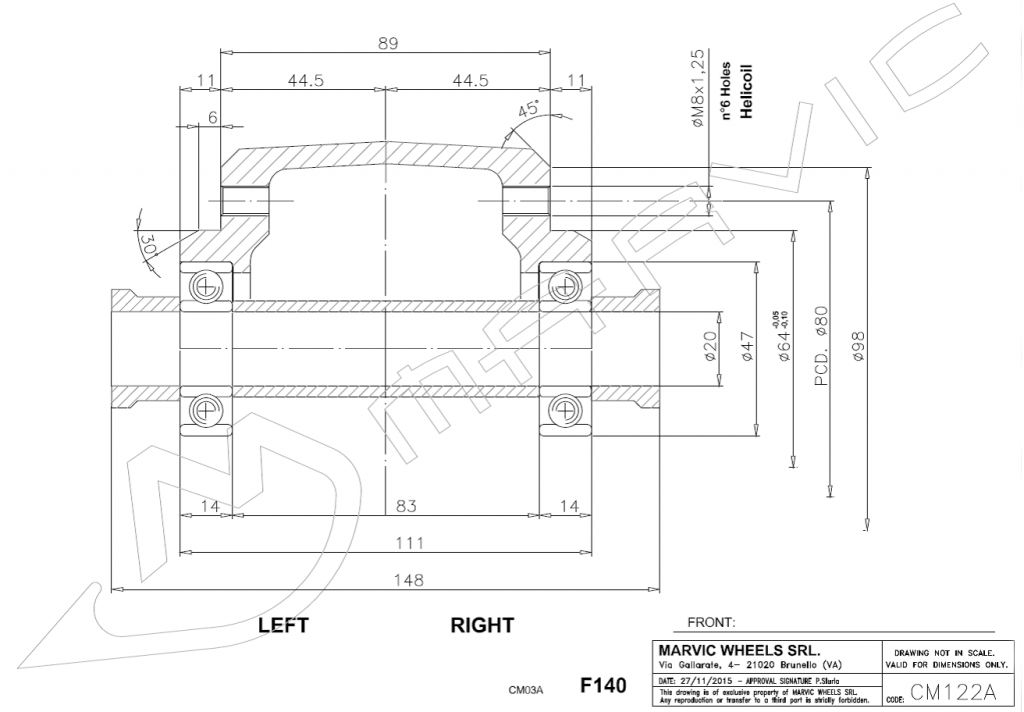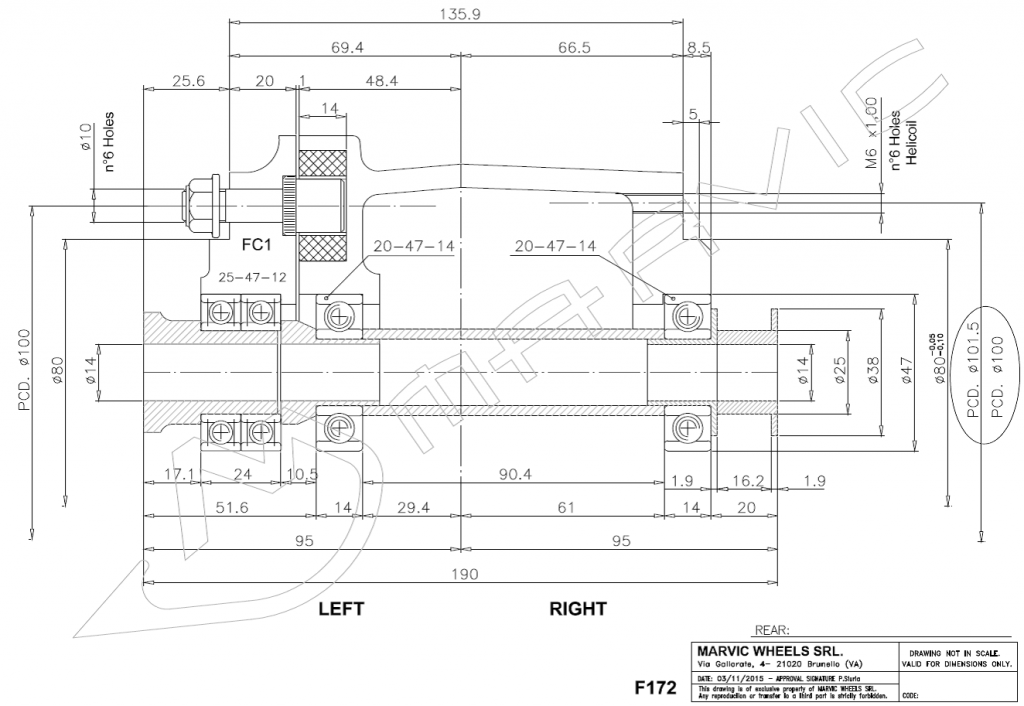As I was ploughing through the literature/websites dealing with these kind of bikes, I found it hard, not say impossible, to see how people where building up their front & rear wheels. At least it was very difficult for me out here , without physical access to any hardware to see how I could make such off-the-shelf components come together to complete wheel assemblies, fitting the front and rear forks with brake discs and drive sprocket and the whole nine yards. And on top of this my natural aversion against wire spoked wheels. Aversion because I, in spite of my engineering background, never had understood the mechanics of such things. Wire spoke wheels are just too inexact for my taste, but again this is because I don’t understand them and not because there is something wrong with them. Just like wood. I don’t like to work with wood because wood changes dimensions with e.g. humidity, wood cracks and so on.
I like solid metal, be it steel, aluminium or titanium or bronze. These materials you can drill and mill and turn and grind into various shapes, dimensions and tolerances and there they stay, no matter the temperature or humidity or whatever. Within limits.
As I was despairing about the wheel situation I remembered that there used to exist Italian cast wheels called Campagnolo. Just a little bit of Googling brought me to the website of the company MARVIC, where they showed that they were making just what I was looking for: Front and Rear wheels cast in a magnesium alloy. I sent them an email and got a prompt reply, in perfect English, saying that they thought they could help me. They emailed me a set of drawings showing the outline of the hubs and asked me to fill in the dimensions I wanted

